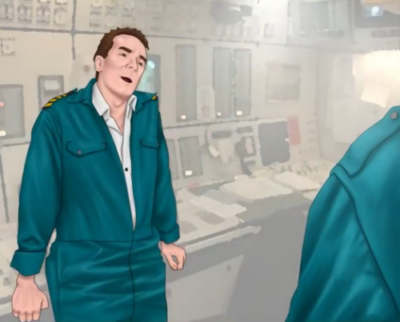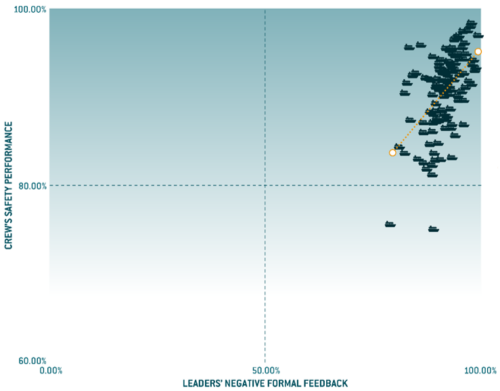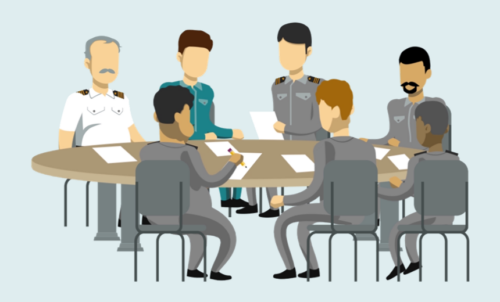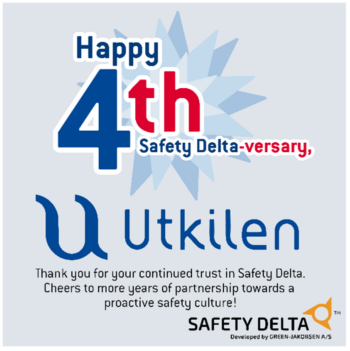Unlike positive feedback that surely inspires and motivates anyone, negative feedback from superiors can either make or break the crew’s safety performance.
It’s also not just about what you say, but how you say the negative feedback.
We know that casual “well done” and pats on the back boost performance. So, should you also give negative feedback in an informal setting?
Is the informal approach truly the golden ticket to effective feedback? Our data shows that it depends.
As long as it’s positive, informal feedback is good. But if it’s negative feedback, a formal setting works better.
Think of it this way:
If a superior gives you criticism in an informal setting, how likely would you be able to break down the hierarchy and discuss the point in a balanced manner? Or if you’re the superior, how likely would your feedback be perceived as fair and justified?

Informal, formal: Which feedback works where?
Informal feedback is an unscheduled, casual conversation about how the work is being done. There is no formal process, and it can come in all sorts of forms. In some cases, it can be unwarranted or unwelcome.
Formal feedback, on the other hand, is more organised. It is structured, usually pre-planned, and documented.
Now, how do they impact the crew’s performance? Here’s what our data revealed:

This graph shows that negative formal feedback significantly improves the crew’s safety performance
Why does a formal setting work better for negative feedback?
The organisational justice theory suggests that individuals are more likely to accept negative feedback when they perceive the process as fair.
The problem with negative feedback given in an informal setting – of course, except for stopping unsafe acts – is it might leave the crew member feeling unjustly criticised. There’s also the power dynamic that might limit open dialogue.
In this regard, a formal setting works better because it provides a structured environment that breaks down hierarchical barriers and levels the playing field.
Everyone gets equal opportunities to speak their perspectives and voice their concerns. The conversation then becomes an open and balanced dialogue. You erase the tension and work towards solutions together.
If you’re the giver of the feedback, you would also be more compelled to present your case with more effort, making the criticism feel more thought-out, fair, and justified. If you’re the receiver, this perceived fairness will help you become more receptive to the feedback.
A platform for structured and balanced dialogue
The Safety Delta Dialogue serves as your platform for a more balanced discussion of feedback. Now, we know that open communication is the lifeblood of good feedback. So how can leaders promote an open and trusting atmosphere during the Dialogue – even when there’s negative feedback?

Here are some tips:
Train the leaders
While informal praise has its place, it’s the strategic use of structured feedback that truly sets high-performing crew apart.
Hence, all leaders should be equipped with training on how to give feedback the right way. Then the on-board leaders in particular can turn critical feedback into a tool for improvement and growth.
Here’s something leaders should be aware of: One of the reasons why formal feedback mechanisms fall flat is if the leader hasn’t engaged or connected with the crew through informal feedback or casual conversations along the way.
It can be challenging to give crew members informal feedback if they don’t hear from you regularly, only to be surprised when you call them in for a formal feedback discussion. So, make sure you give both informal and formal feedback.
If you’re a crew member receiving critical feedback:
Keep in mind that this type of feedback is often a good thing. It helps you critically look at your own performance and gives you the opportunity to improve and grow.
Happy Safety Delta anniversary!

Got questions or thoughts about today’s newsletter?
We’re all ears! Our team of real people (no bots hiding behind screens) are eager to hear from you! Email us at safety.delta@green-jakobsen.com.ph and we promise to keep everything confidential and respond to you.
Want to suggest a topic?
Let’s make Among Us more relevant to you. If there’s a topic you’d like us to cover in the next issues, email us at safety.delta@green-jakobsen.com.ph.
Want to read past issues of Among Us?
Catch up on the previous issues here to gain new learnings and read inspiring stories.
Found this email in your Junk or Spam folder?
Please drag our email to your Primary Inbox and add safety.delta@green-jakobsen.com.ph to your contact list so you can receive our future emails directly in your Inbox.
Among Us is a monthly digital newsletter, primarily for Safety Delta members, but also for those who want to get a ‘sneak peek’ at the experiences gained by those of us who are already ‘insiders’. It also presents the developments of Safety Delta.

